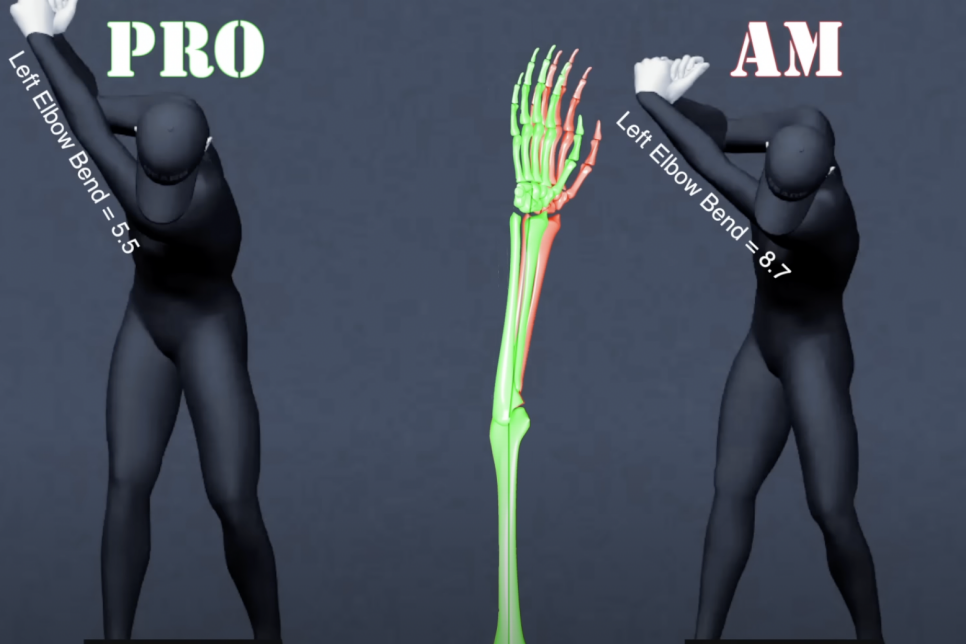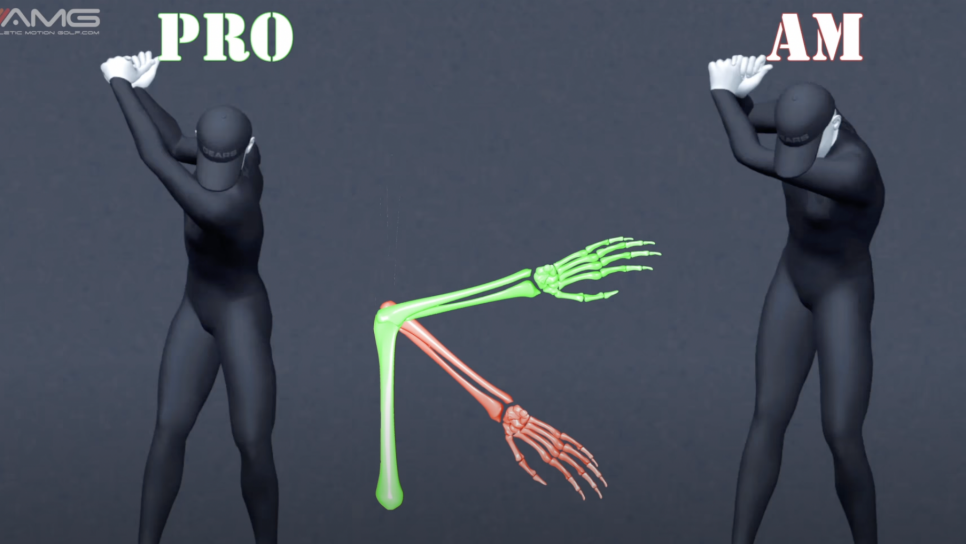When they’re striving for more distance, golfers often think that the longer the backswing, the better.
There’s an element of truth to that, but like so many things in golf, it’s not quite that simple.
Yes, a longer backswing will help you hit longer drives, but trying to lengthen your backswing by any means necessary can often have the opposite effect. Here’s why.
Collapsing your arms
Golf Digest Best in State Teachers Shaun Webb and Mike Granato, who together run Athletic Motion Golf, find that when golfers start trying to swing past the point where they’re physically capable of, their golf swings often begin collapsing.
The result is that amateur golfers will often tend to bend their left arm more than pros around the top of the backswing…

…and they’ll also bend their right arm a lot more. When that arm collapses like that, it brings it so close to their body that it almost touches their right shoulder.

Suddenly, all structure in their golf swings are lost. This excessive bending stops amateur golfers from creating a stretch in their upper body, and can cause them to hyper-extend their arms later in their swing. Both those things cost you power, and general happiness.
But don’t worry!
Rose Zhang’s tip to fix it
Rose Zhang, writing as part of our recent instruction feature, has a great feel to with this. It’s pretty simple, too: don’t worry about length of backswing, worry about width of backswing.
It should start from the moment you take the club back. You want to feel as wide as you can with your arms, and then that you keep that width all the way through the backswing.
As she writes:
“If you can’t generate power with a lot of swing speed, it’s important to maintain your swing’s width… staying nice and wide, and that extra distance the club travels helps compensate for slower swings. It also improves your chance of solid contact because you don’t have to do anything extra to get the club back to the ball. Think to yourself, Start wide and stay wide.”
She continues:
“A lot of people worry about how far they take the club back before they start the downswing. I don’t think that’s the priority for players like us. It’s more important to take any extra movement out of the swing. My coach calls the extra motions ‘slack’, and we don’t want any slack.”
Strip the slack out of your swing by focusing on starting wide then staying wide will help you stretch more, and hit the ball better too. Your swing may not look as long. But it’ll be the right kind of long. And you’ll hit the ball longer because of it.



